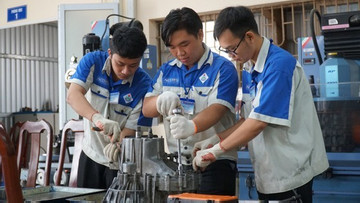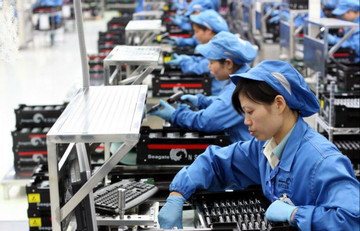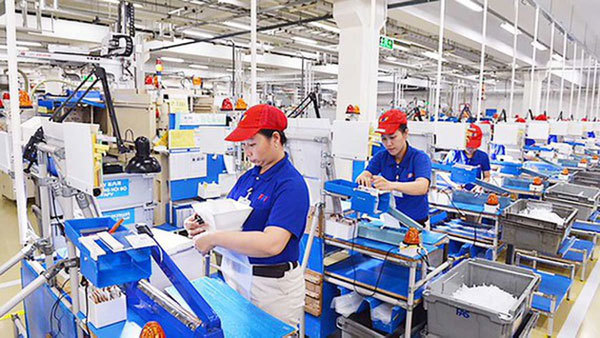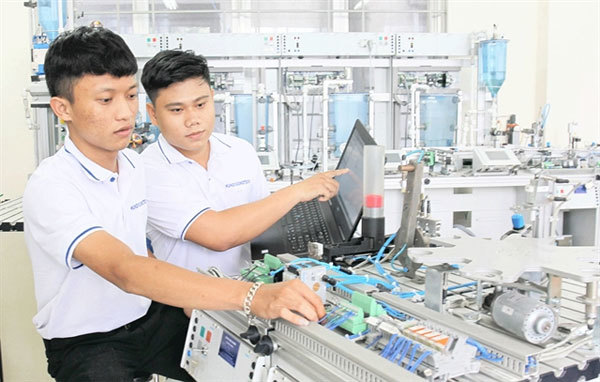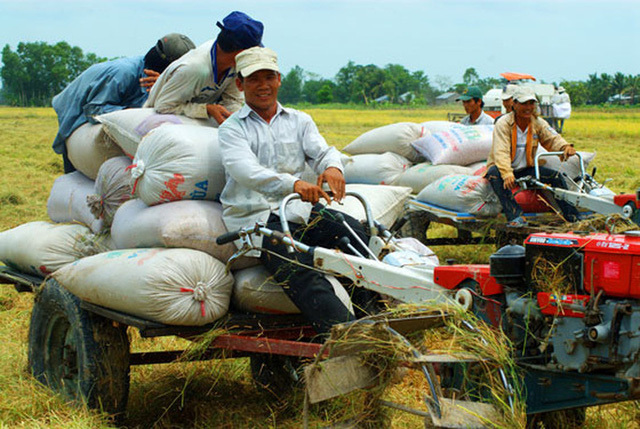- © Copyright of Vietnamnet Global.
- Tel: 024 3772 7988 Fax: (024) 37722734
- Email: evnn@vietnamnet.vn
vocational training
Update news vocational training
Urgent need to improve young labourers’ skills
There are many concerns that vocational education is not keeping pace with the changing needs of the work place, since it is vocational training which has the strongest and most direct ties to the labour market.
VN to focus on training workers for semiconductors, hydrogen, carbon credits
Vocational training will focus on skilling up the workforce in the semiconductor chips, hydrogen and carbon credits fields, following a requirement of Minister of Labour, Invalids and Social Affairs Dao Ngoc Dung.
Some 1.6 million rural labourers in Mekong Delta to receive vocational training
About 1.6 million rural workers in the Mekong Delta region will receive vocational training as part of a project on training and changing occupations for rural labourers in the region by 2030.
Vocational training institutions in crisis
The current system of vocational schools features poor management, accompanied by a lack of funds, and failure in student recruitment, hence teaching facilities and equipment are not invested.
Many graduates work in fields unrelated to their university major: survey
More than 21 percent of university graduates are working in fields unrelated to their major.
Vietnam: new destination for multinationals to set up R&D centers
Vietnam wants to upgrade foreign direct investment (FDI) quality by manufacturing products with higher hi-tech and added value, and multinationals are also striving to do this after many years in Vietnam.
30,000 Vietnamese studying in the US
The Minister of Education and Training and a Vietnamese delegation on September 19 attended the Education Summit in New York City chaired by UN Secretary General Antonio Guterres, with representatives from 200 countries and territories.
Vietnam lacks agricultural engineers
According to representatives of many universities with agriculture faculty, a few senior high school graduates want to enroll in the agriculture faculty resulting in admission scores plus insufficient recruitment quotas.
The good worker in the digital era
Truong The Dieu has gained praiseworthy achievements in recent years: he won a silver medal at WorldSkills 2019, got a Second-class Labor Medal, and became a Vietnamese Outstanding Young Face and Vietnam Vocational Skills Ambassador 2021.
Vocational schools struggle with admissions
Vocational colleges are struggling to meet admission quotas at a time of the year when students will have already started school.
Only 24.5 percent of workers certified
According to a report of the Central Institute for Economic Management (CIEM), 24.5 percent of jobs in Vietnam were high-skilled as of 2020 while the remaining were low skilled ones.
Materials industry faces shortage of qualified staff, researchers
Vietnam has advantages to develop a materials industry but has not developed in line with its potential, Tran Tuan Anh, head of the Central Economic Commission, said at a conference held on April 10 in HCM City.
77 percent of Vietnamese workers still don’t have officially recognized qualifications
Vietnam’s labor productivity has been been surpassed by Laos and Cambodia is not far behind. Labor standardization and vocational skill development are facing ‘unprecedented’ challenges.
HCM City reaches vocational training targets
Vocational training programmes in HCM City have narrowed the gap between employers' expectations and employees' qualifications thanks to cooperation between vocational schools and businesses.
Vocational training graduates in high demand
Graduates of vocational schools have many job opportunities due to businesses' increasing demand for workers with practical skills.
1,000 labourers affected by Covid-19 receive free technical vocational training
Deutsche Gesellschaft für Internationale Zusammenarbeit (GIZ), the German development agency, in cooperation with Vietnam’s Directorate of Vocational Education and Training and departments of Labour invalids and Social Affairs in eight cities
9+ model changes society’s view of vocational training
Formal training carried out hand in hand with vocational training for students graduating from secondary high school, known as the 9+ model, has gradually changed society’s perspective on vocational education.
Colleges, vocational training schools face new enrollment quotas
Many universities have changed enrollment methods, including higher enrollment quotas that will be based on students' high school records.
Occupational training goes hand in hand with labour market
 Truong Anh Dung, directorate of Vocational Education and Training Department under the Ministry of Labour, Invalids and Social Affairs, talks on his department’s resolve to create a diverse occupational education network to meet labour market needs.
Truong Anh Dung, directorate of Vocational Education and Training Department under the Ministry of Labour, Invalids and Social Affairs, talks on his department’s resolve to create a diverse occupational education network to meet labour market needs.
To mechanize Vietnam's agriculture, tractor drivers also need to be trained
 In order to mechanize agriculture, Vietnam needs to have skilled labor force, experts say. Many workers in agricultural production need to be trained or should obtain degrees.
In order to mechanize agriculture, Vietnam needs to have skilled labor force, experts say. Many workers in agricultural production need to be trained or should obtain degrees.



